Women’s Rights, The Ongoing fight
Women’s Rights; The Ongoing Fight
Without women, human reproduction would be unachievable, of course without men it would be impossible, but women do so much in order to execute reproduction, yet we have gone through so much discrimination and inequalities, it is ridiculous! Luckily, women have not taken these inequalities ever so lightly and began fighting for our rights! Feminism arose, the movement which aims to end the inequalities between genders (Healy & O’Brien, 2015). Ideally in the 19th century women stayed home raised children while men went to work and were bread winners, during the Industrial era however things began changing as women began entering the work force and gained rights to vote. Then began the Movement for Gender Equality, and women went through three waves of feminism trying to secure their rights Healy & O’Brien, 2015).
Image below, Women are Wild Roses, represents our Fight for our Rights
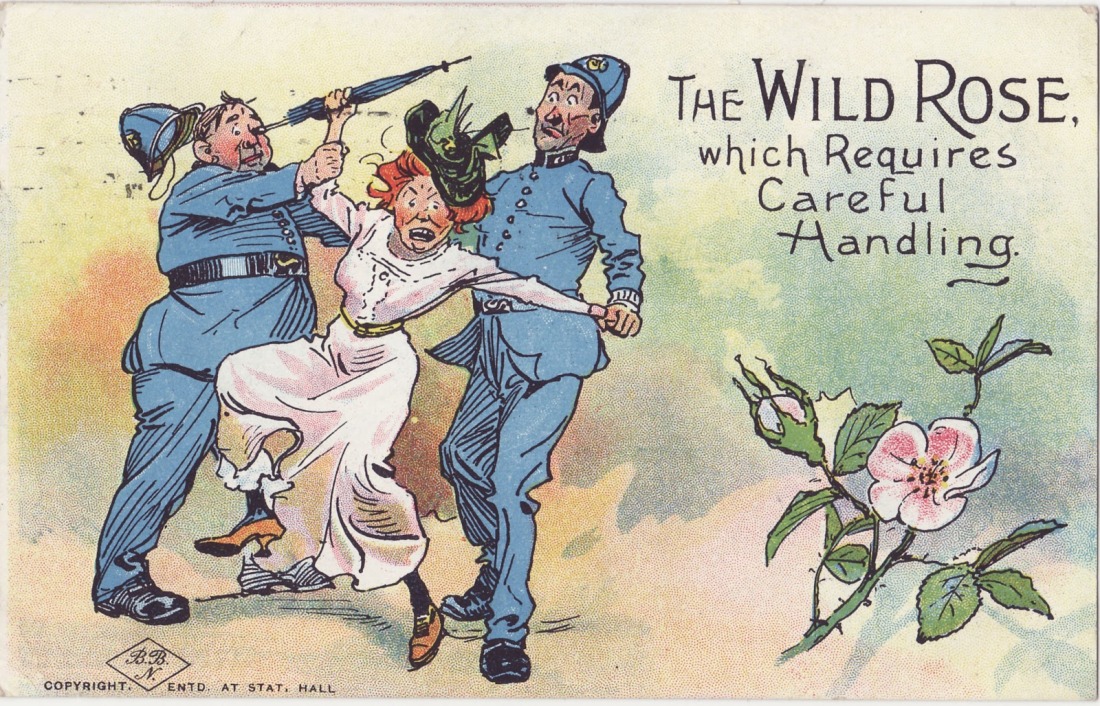
The first wave of feminism was considered the Suffragists which began during the 1800’s in which women and activists such as Elizabeth Cady Stanton, Lucretia Mott, Frederick Douglass, and others began questioning women’s rights and composed a document that requested women’s rights. Mainly women with access to resources joined this first movement, and during this time the first birth-control clinic was opened (Healy & O’Brien, 2015). The second wave was the Women’s Liberation Movement which during this time women were still really constrained to their husbands, living a stay at home wife life. During the second wave several great things were achieved for women, the Equal Pay Act (1963), other employment rights, the Women’s Educational Equity Act and later on laws against marital rape and domestic violence (Healy & O’Brien, 2015). The last but not the final (third) wave was the Postmodern and Postindustrial Movements for Gender Equality consisted more of different types of feminists and definition of genders and the type of equality they get. The third waves takes more into account if you a female that’s feminine or masculine, a transgender, or if you are someone who maybe not have biological parts of the gender you identify with and etc. Generally all the feminists that compose of the third wave target the complex issues of gender inequality and strive for everyone’s freedom, equality in the work, and equality in making own decisions.
Image below is of Wave two, getting Equal Pay Act
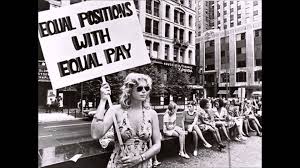
Three waves of feminism had not ended all inequality though and still today we see larger wage gaps between women and men, gender discrimination, and just plain old unequal gender mentalities just as we see the same for race and immigrants. Although there is a lot of promotion with women empowerment, we are still not quite full there will full on women empowerment. In a study , “How ’empowerment’ may miss its mark: Gender equality policies and how they are understood in women’s NGOs,” it was found that Iceland, Norway, Finland and Sweden are the places that ranked highest with gender equality (Phillips, 2015). It was also noted in this study that countries that had a long time for woman suffragists and activism are the countries which acknowledged women to be more equal to men and that many countries though have had little opportunity from women’s movement (Phillips, 2015). Places that don’t allow women to fight for their rights is so sad and distressful to me because I could not imagine living in a world where I did not have rights, especially when I’m a human just like any other man, or person that identifies differently.
Image Below, Still fighting for that true Equal Pay (2016)
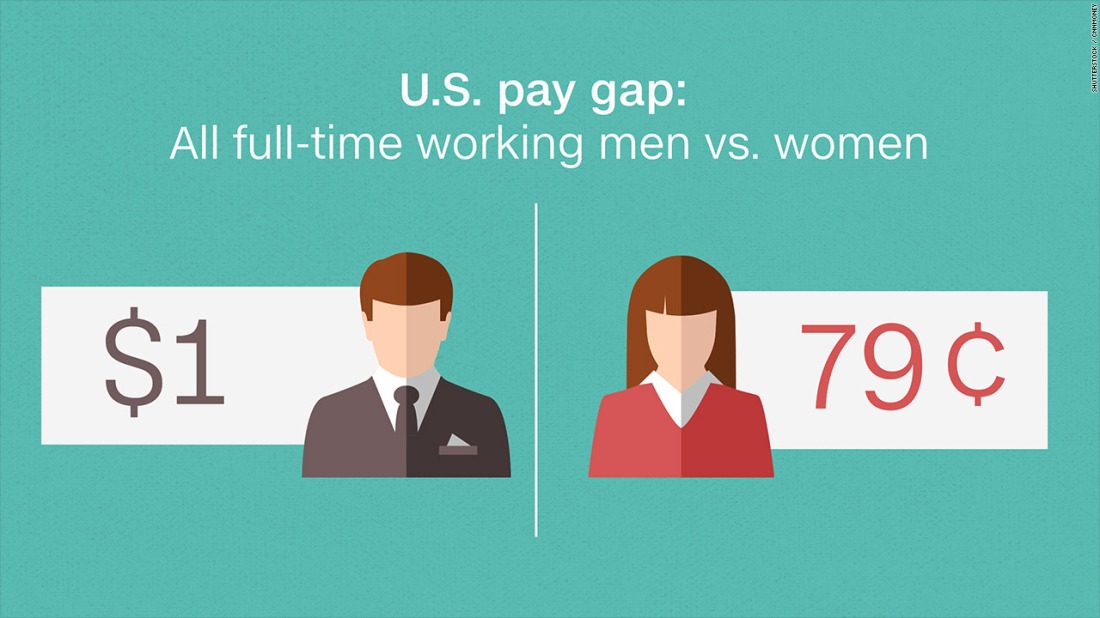
Women’s rights are so important to me, I thank all the women and men that participated in the gender equality movement and hope that we all continue to fight for the rights of anyone who is being unequally treated. Although women have equal rights as men now there are still unspoken of inequalities that go on, such as the wage gap, the inequality in employment in certain fields, and etc. In the study, “The limitations of transnational business feminism: The case of gender lens investing,” it was found that women are discriminated in mortgage loans, financial investment, and “underrepresented as investors and financial actors” (Roberts, 2016). Working in management position I have experienced discrimination toward my gender for the position I hold, even by other women which is quite discouraging. When dealing with male customers, they’ve asked me “is their another manager here?” or have pointed to another guy behind the registers saying, “Is he a manager?”. As if because I am a woman, my responses to their concerns are not accurate because I don’t seem to understand. Sometimes I know that these type of comments may be “Freudian slips,” if you will, but it still does not change the fact that there is gender bias, discrimination, and inequality still going on around us and this type of implicit thinking and views need to be changed. I feel strongly about holding up to women’s movements and its on going movement that we need to keep in order to keep powering through our owed rights.
A video on what our Gender Equality is like now, in US and other Countries:
Additional Links:
History of women’s rights:
http://www.nwhp.org/resources/womens-rights-movement/history-of-the-womens-rights-movement/
Women’s Rights:
https://www.aclu.org/issues/womens-rights
Gender Inequalities Women Face:
https://www.weforum.org/agenda/2016/10/global-gender-gap-2016-usa-saadia-zahidi/
References:
Healey, J.F., O’Brien, E. (2015). Race, ethnicity, gender, & class: The sociology of group conflict and change. Thousand Oaks, CA.
Phillips, R. (2015). How ’empowerment’ may miss its mark: Gender equality policies and how they are understood in women’s NGOs. Voluntas, 26(4), 1122-1142. doi:http://dx.doi.org.lib-proxy.fullerton.edu/10.1007/s11266-015-9586-y
Roberts, A. (2016). The limitations of transnational business feminism: The case of gender lens investing. Soundings, (62), 68-83. Retrieved from https://search-proquest-com.lib-proxy.fullerton.edu/docview/1793934276?accountid=9840
Waves of Immigration & The Dreamers
There has been so many groups migrating to America dating back to the early 1800’s, there has been three large waves of immigration. The first two waves consisted of Northern, Western, Southern and Eastern Europeans which ranged from the 1820’s to 1920’s (Healy & O’Brien, 2015). During the third wave there was huge migration from all parts of the world, Hispanics, Asians, Indians etc. Ethnic groups started rapidly growing in the United States, Hispanic Americans growing more rapidly than other ethnicities, Mexican Americans having the highest growth within Hispanic Americans. Unfortunately, although there is so much culture and so many different ethnicities it has not enlightened the anti-immigration groups that live on in America. Many ethnic groups have unfortunately faced discrimination, racism and prejudice against them by not being able to go to school, not being able to rent or buy a place to live and by not being able to work without documentations (Healy & O’Brien, 2015). These anti-immigrants views are correlated with the Noel hypothesis, in which anti-immigrants groups dislike immigrants because they have this belief that they are taking their resources such as jobs, homes and economic resources.
Image of U.S Immigration Wave
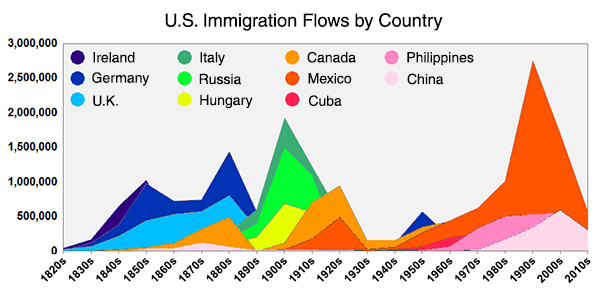
Due to the negative views toward immigrants it has made it difficult for immigrants to live in the land of opportunity without being deported, discriminated or facing inequalities, there has not been any immigration policy that settles any matter with the 10.7 million immigrants that are living in our country (Healy and O’Brien, 2015). Many immigrants initially came to America for economic and educational resources due to the high demand for undocumented immigrants that are willing to work for cheap labor, and with them without choice they bring their families and children (Healy and O’Brien, 2015). When bringing their children, the children of immigrants have been in an awkward place where they are not U.S. citizen and are not citizens to their homeland, so where are they suppose to go? The DREAMers act was created in 2001, but nothing really happened until 2012 when President Obama administered DACA (Healy and O’Brien, 2015).
Image of Dreamer Activist
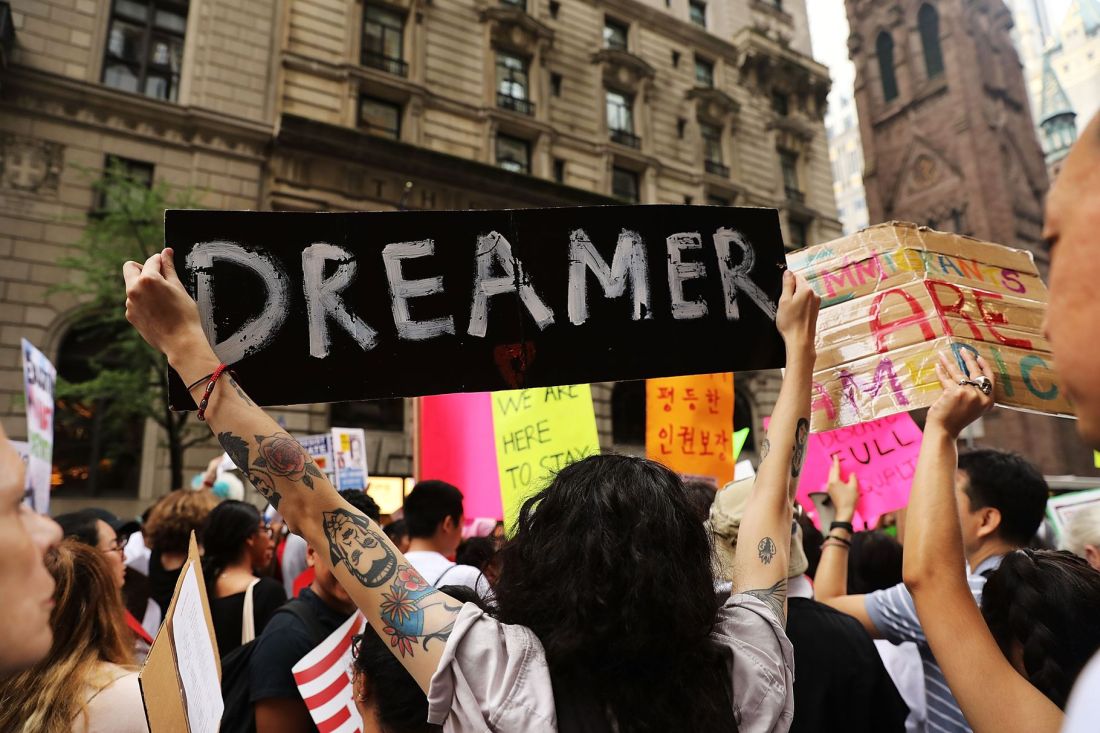
DACA protects those who were brought illegally into the country by their parents, and it gives the chance to these children to work, go to school, and other rights for a two year period and will not face deportation if apply and are approved (Schmid, 2013). The DACA act has provided so many great opportunities for those who want improve their quality of life by gaining an education and employment. Although those under the DACA act are in a middle ground where they are not undocumented but technically not legal still face possibilities of deportation. In a study, Mexican (im)migrant students and education: Constructions of and resistance to “illegality” they have found that several immigrants that categorize as DREAMers have come together and formed strong activism as a group which has had quite the effect (Núñez-mchiri, Seif, Ullman, 2014). Thanks to the activisim of these dreamers, immigrants have been able to gain the right to education no matter of illegality from grades K-12, the right to social and health services, and now under DACA the right for employment and higher education.
Image of DACA-mented Benefits
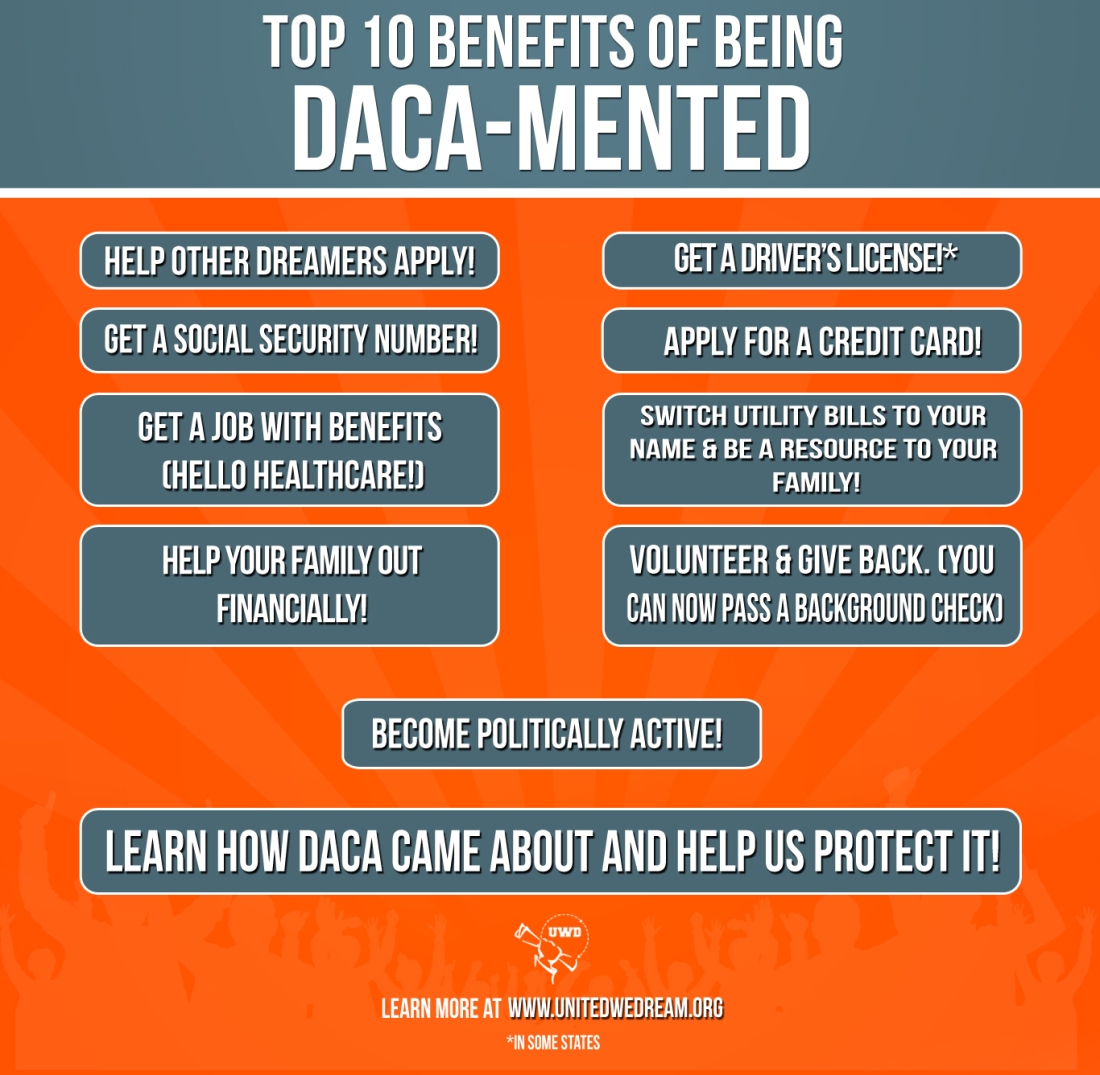
I currently have several friends and relatives that are worried about the near ending of DACA by President Trumps choice. I believe that this takes away the hope that immigrants were holding onto, that a near end if illegality was coming. The announcement of the end DACA raised so much fear in people that really shouldn’t be living in fear in their home place. People that have not imposed a threat to anyone in the U.S. and have been living here consistently should have right to becoming a U.S. citizens. It will be so devastating to see how as a community we have worked so hard for the rights of our neighbors, friends and families and to watch it end in a blink of an eye. Although myself do not qualify as DREAMer, the DACA situation and immigration policy hits close to home because I am an immigrant but luckily gained the chance to be legalized and I could only imagine all the fear I would be going through if my future was taken from me in the blink of an on eye all because I was brought here when I was little.
Empowerment of DACA-mented Video:
External Links:
Dacamented Teachers:
https://www.teachforamerica.org/join-tfa/is-tfa-for-me/dacamented-teachers
Info. on DACA:
https://www.uscis.gov/archive/consideration-deferred-action-childhood-arrivals-daca
Info on DACA:
https://unitedwedream.org/about/projects/deferred-action/
References:
Healey, J.F., O’Brien, E. (2015). Race, ethnicity, gender, & class: The sociology of group conflict and change. Thousand Oaks, CA.
Schmid, C. L. (2013). Undocumented childhood immigrants, the dream act and deferred action for childhood arrivals in the USA. The International Journal of Sociology and Social Policy, 33(11), 693-707. Retrieved from https://search-proquest-com.lib-proxy.fullerton.edu/docview/1441350025?accountid=9840
Seif, H., Ullman, C., & Núñez-mchiri, G.,G. (2014). Mexican (im)migrant students and education: Constructions of and resistance to “illegality”. Latino Studies, 12(2), 172-193. doi:http://dx.doi.org.lib-proxy.fullerton.edu/10.1057/lst.2014.32
Blog #1- Diversity in America and Social Inequalities
Diversity in America and Social Inequalities
America is known to be a huge melting pot, due to immigration but despite our diversity prejudice and discrimination tends to be a constant issue in our country. It is really disappointing to see how far as a country we have come but yet still be so stuck…Immigration rates are rising drastically and have been over the years, these rates creating different groups in America that have unfortunately opened doors for prejudice and discrimination .

There are several different “groups” that one can belong too all depending on things like your race, gender, religion, social class, culture and etc. The category of group you fall into can be affected by the fact if you are an immigrant, if you are of certain social class, or simply by how you look and how you may identify yourself. Many immigrants (but not limited to) fall under minority groups, which described in “Race, Ethnicity, Gender & Class: The Sociology of Group Conflict and Change”` minority groups have to do with the amount of resources and power one has in society, and usually minority groups tend to be large. Minority groups tend to have five major things in common, inequality ,visibility, awareness, ascription, and intimate relationships with one another (Healey & O’Brien, 2015). Minority groups share similar disadvantages such as lower pay for same job as a non-minority, live in poverty areas, bad health care perhaps and etc. As for visibility they share common traits and characteristics such as skin color, facial features, hair texture and etc. Awareness as in that for the most part minority groups know they are part of a minority group and that others around them look different and have more advantages. Ascription being that you are born into the group, people that are minorities is most likely because their parents are minorities and the their parents before them. Lastly, members of the minority groups tend to form relationships with one another which is another reason why children are scripted their group status (Healey & O’Brien, 2015).
Going further into minority groups and the formation to them, several sociologists such as Karl Marx shared their views on social inequalities.

Karl Marx believed that inequalities came about due to the economic differences between people and the different economic opportunities different groups have. Marx talked about the “means of production” which included materials, tools and resources and how society distributed such items (Healey & O’Brien, 2015). Marx insisted that get way social classes worked were that they were split right down the middle, one group got all the advantages and control over means of production the other group did not get much demeaning them low on social class. In a recent article Marx’s views are compared to recent day economic tragedies such as the Great Recession. Authors Pimentel and Martin make comparison on how during the great recession certain people from certain social classes felt the recession much more than those pertaining to a high social class (2014). Also another study done by Wikstrom takes a lot of Karl Marx’s theories and applies them to current day labor (2012). To my person experience, I definitely would have to agree with some of Marx’s views and theories because they are easily applied to everyday scenarios that I deal with. Working in a business setting I get to see a lot of the economic inequalities that happen. As a manager I have personal access to wages and things of that sort for employees that work there, a means of production that I witness is that there a several male employees that have higher wages then the female employees, which goes more into gender issues. I personally take offense to this, but although perhaps there are some loose ends to Karl Marx’s theory I still believe that a lot of his theories were spot on.
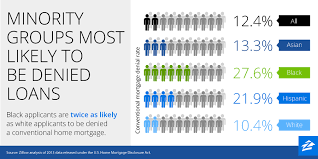
Here’s A Video on means of production!
Resources
Healey, J.F. (2015). Race, Ethnicity, Gender, and Class: The Sociology of group conflict and change. Thousand Oaks, CA. Sage Publishing.
Wikström, J. (2012). Practice comes before labour: An attempt to read performance through marx’s notion of practice. Performance Research, 17(6), 22-27.
Martin, E. , & Pimentel, M. (2014). Viewing the great recession through radical economics: Social class, inequality, and the social safety net. Global Virtue Ethics Review, 7(1)70-94.
A little about me :)
Hello bloggers,
My name is Jaqueline Gutierrez, but I typically go by Jacky. I am currently attending California state university of Fullerton, I am proud to say that this is my last semester and I will be graduating. I will be earning my bachelors degree in psychology. I go to school full time and I work full time. I currently work for Nordstrom, I am an assistant manager at one of the companies Nordstrom Racks and I really enjoy what I do. In my job I deal with styling and merchandising which is my favorite part of my job. On the other hand I also deal with managing my team and customer complaints. Although I love my job sometimes it can be a littler stressful dealing with the eventful customers that feel very entitled. Working in a customer service based job I deal with so many types of people which is why both psychology and sociology interest me a lot. I feel like majoring I psychology has led me to approach certain customer situations in a better way than I would have otherwise. Psychology has very much interested me and I have never doubted my major, although recently sociology has really caught my attention, social work to be specific, and I may seek to get my masters in sociology which is why I am taking this course and why I am writing my blog. Social inequality seems to be a great deficit that our country seems to deal with and what way better approach then to try and make a difference. Some other things about me are that I own three huskies (Duke, Luke and Rusty) with my boyfriend of four years. I love my huskies and I try to make as much time as possible for them despite my hectic school and work schedules. My boyfriend and I try taking them running or hiking as much as possible but sometimes we can’t because of the hot OC weather. Besides school, work, boyfriend and huskies if I have any spare and personal time I enjoy spending it painting. I absolutely love painting and while I paint I love discovering new music. I used to paint quite often and there was a while when I got pretty good but after I started focusing more on school and got promoted at Nordstrom I painted less and less because I don’t have as much time as before. Sometimes I also enjoy fashion amor which is why I work for a fashion company, I really enjoy researching the latest trends , vintage fashion, and just anything having to do with fashion to get inspiration for the way I dress and the way I sell to my customers. The purpose to my blog will be to raise awareness of the social inequalities that are dealt with on everyday basis, and my personal experiences that relate to these social inequalities
.
Me and my boyfriend:)